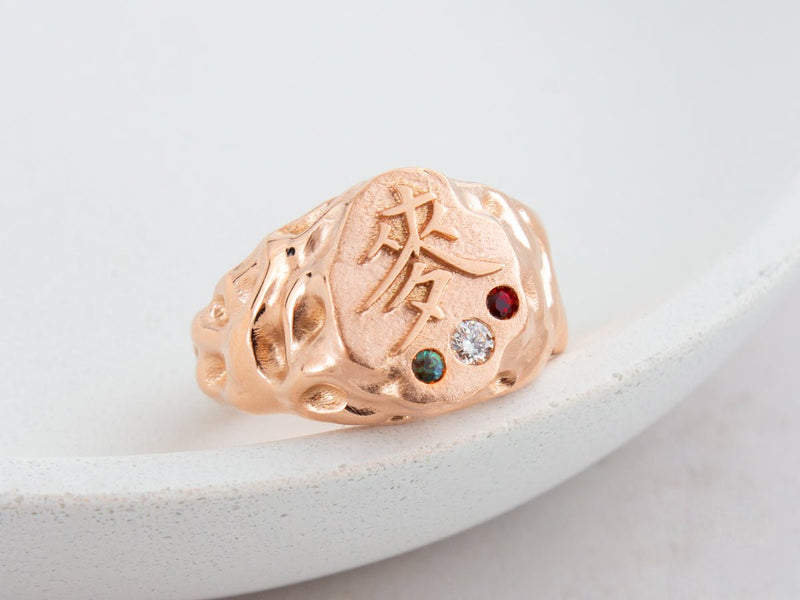Clients often ask me if we can melt their gold to make their new jewellery. I wish there was a simple answer but there are several factors to consider as we determine if this is the best path for your restyled jewellery.
Our priority is to create jewellery of the highest quality and this begins with the quality of our materials, including gold. When we assess our clients’ gold for melting, the original gold must meet these 3 requirements:
- Gold Colour and Purity
- Quantity of Gold
- Gold Composition
There’s so much information I’d like to share with you that I’ve divided this blog series into 3 parts. In the first part, we’ll cover Gold Colour and Purity.
About gold alloys
Gold jewellery is available in three main colours: white, yellow and rose. These colours are attained by mixing pure gold with other metals (like silver, nickel and copper). In addition to changing the colour of gold, combining gold with other metals also results in a harder, more durable gold alloy. The resulting alloy also has a lower purity, which impacts the price of gold jewellery.
Gold purity is measured in karats, which indicate how much pure gold the alloy contains. Pure gold has a purity of 24 karats. The percentages of pure gold in the most commonly found alloys are as follows:
- 18 karat - 75% pure gold (18/24)
- 14 karat - 33% gold (14/24)
- 10 karat - 67% pure gold (10/24)
In most cases when we melt our clients' gold, the new jewellery has the same colour and karat as the original gold. If we melt gold alloys of different karats and colours, the resulting alloy will have a karat weight equal to the weighted average of the original alloys. The colour will be a surprise combination of the original alloys - given the different chemistry of each original alloy, it is not possible to predict he resulting colour of the new jewellery.
The only times we can create a new alloy colour that’s different from the original one is when the original gold is either pure gold (24 karats) or 22 karats. The high purity allows us to combine it with other metals to create a new colour and purity.
Design Spotlight: This unique rose gold ring was created by melting our client’s gold. It features 3 distinct textures and our client's family birthstones: alexandrite, diamond and garnet. As a surprise to her husband, we embossed his name's Chinese character.

Our client provided these 22k gold pieces for melting.

Our client's gold was ideal for this project because it met all 3 requirements for melting it into her new design:
- It had a purity of 22 karats, pure enough to combine it with copper and other metals to create her desired 14K rose gold alloy.
- The resulting alloy had the extra weight needed to properly complete the casting process (we talk about gold quantity in Part 2 of this blog series)
- The original gold had a high-quality composition as it had not been previously soldered (we talk about gold composition in Part 3). This maximized our chances of producing the dense and high quality alloy needed to create the embossed Chinese character on this one-of-a-kind ring.
Stay tuned for Parts 2 and 3 of this blog series, where I’ll tell you why the casting process requires your original to weigh more than the final piece of jewellery (Part 2) and how gold composition impacts the quality of your new jewellery (Part 3).
Thinking about bringing us your old jewellery to create something new and exciting? Every custom project is unique, and I look forward to chatting with you about restyling your treasures.
Discover our Custom Jewelry Design and Restyling Experience and Book Your Custom Design Call.


0 comments